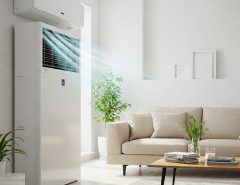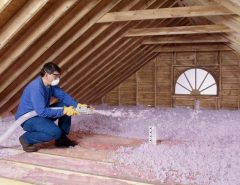In the good old days, a home was designed to be well-ventilated. Windows and doors were draughty, open fires were common, and air vents encouraged air to blow in and up through the floors. It wasn’t pleasant in winter, but it did allow moisture to rise up through the walls and dissipate. Mould, mildew, and other moisture-related problems were far less common.
Today’s homes are like hermetically sealed boxes. uPVC windows and doors, cavity wall insulation, roof insulation, and all the other methods we use to keep our homes well insulated reduce energy bills but are not necessarily good for our health. Modern homes often have excessive levels of condensation, dust mites, and mould. One way to improve air quality and reduce mould and condensation is by using a heat recovery system.
What is a Heat Recovery System?
A heat recovery system supplies and extracts air to a home or office. It is a low-energy ventilation solution that re-uses 95% of the available heat that would otherwise disappear out through the roof. A heat recovery unit and ducting are installed in the property. It works continuously, extracting stale air from inside the home and drawing in fresh air from the outside. All air passes through a heat exchanger. Here, stale air is filtered, and heat is recovered and reused to moderate the temperature of fresh air from outside. The heat recovery function can be bypassed during the hotter summer months.
The Key Benefits of a Heat Recovery System
The main benefit of a heat recovery system installed by a company such as BPC Ventilation is that it can remove condensation and pollutants all year round. Condensation is a major problem in modern homes. Most people don’t open their windows enough, so moisture produced by cooking and bathing builds up in the atmosphere. Excessive condensation leads to mould growth, which is a health concern.
Heat recovery units also remove allergens from the air. Pollen, dust, and other irritants can trigger symptoms in people with asthma and other hypoallergenic disorders. Installing a heat recovery system in your home can dramatically reduce symptoms and make the home a safe and pleasant place to be, particularly in the summer when pollen counts are at their highest.
Homes fitted with a heat recovery unit are more environmentally friendly. Heat recovery and ventilation units reduce the carbon footprint of a property.
You can also save money if you install a heat recovery system. Research indicates that a heat recovery system that is 90% efficient at reusing heat in a property can reduce energy bills by 25%. When installed in a new home, the savings made on heating bills are impressive. They are also cost-effective to run – typically around 10 pence per day.
Can a Heat Recovery System be Retro-Fitted?
Heat recovery systems are best suited to modern homes, as heat loss is minimised. You can retrofit a system in an older property, but it will be less efficient and the benefits you enjoy will be reduced. However, a heat recovery system will eliminate problems with damp, mould, and mildew.
If poor air quality is a concern in your home, consider installing a heat recovery system.





Leave a Reply
You must be logged in to post a comment.